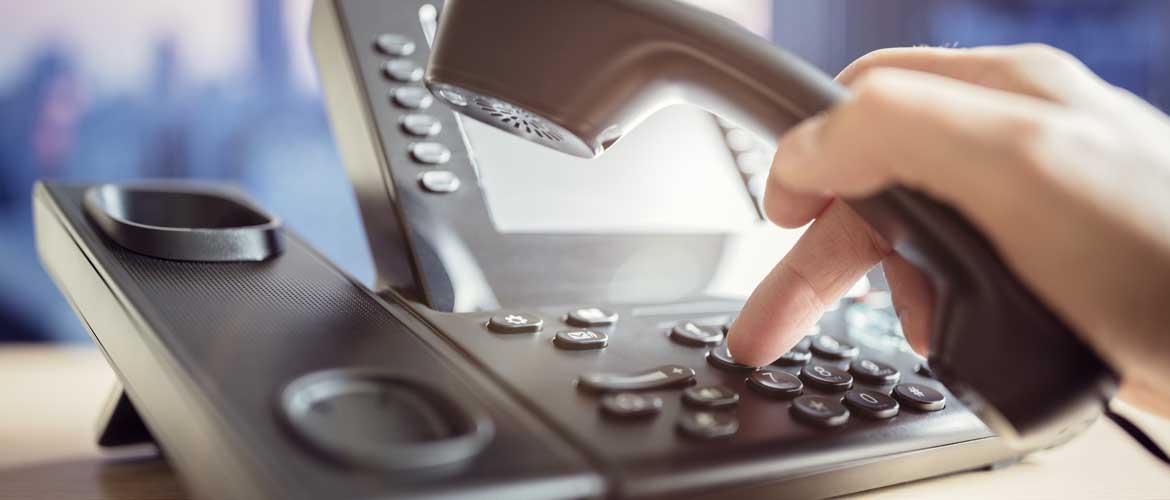April 2, 2024
However, the next time you give your boss a call, grab a free bagel on Friday, or hydrate at the water fountain, you might consider an extra pump of hand sanitizer.
Did you know that it takes only four hours for germs to spread to surfaces around the office when one employee is sick?1 Based on various studies, there are several areas in the workplace that need some extra attention when it comes to disinfecting. And it’s very likely that you use most of these things every day.

The Bugs Are Eavesdropping
Whether your desk phone is for your personal use or used by several of your colleagues, the handle, buttons, and receiver may hold more than 25,000 germs per square inch.2
Don’t have a desk phone? Your cell phone is even worse, with ten times more bacteria than most toilet seats.3 We take our cell phones everywhere with us, but we tend to skip it during our regular cleaning regimens.
MedExpress Pro Tip: When wiping it down, make sure to avoid antibacterial wipes and disinfectants, as they are abrasive and can scratch the screen. Instead, try a lint-free cloth and use a diluted alcohol solution.
A Button a Day Keeps the Germs at Play
Countless people use the elevators in your building each day, which gives germs a perfect place to accumulate. The most germ-and-bacteria-filled areas in the elevator are the buttons. If you see a co-worker nudging the first floor button with his elbow, it could be to eliminate the spread of germs, not just because his hands are full.
Beat Bacteria With a Bottle
Even worse than your office telephone, water fountains may hold up to 2.7 million bacteria per square inch – just on the spigot.2 Consider using the water bottle filling station to fill your personal bottle or cup, especially when it’s flu season. Don’t forget to regularly clean your water bottle between uses.
Viruses at Your Fingertips
Multiple people often use the same keyboard in a workspace, which increases the chance of transferring germs. Keeping hand sanitizer or disinfecting wipes close by may help to encourage colleagues to clean the shared space before or after use. If you have your own personal keyboard, wipe it down once a day, along with the rest of the surfaces on your desk.

A Side-Dish of Pathogens
Lunch and break room surfaces are among some of the filthiest in a typical office. A study by the University of Arizona in Tucson found that within two hours, germs from the main door of the building had made it to the coffee pot because of how frequently it is touched early in the workday.1 From there, they quickly spread to other office surfaces and objects in shared spaces, as well as your personal desk and belongings.
Vending machine buttons, sink faucet handles, and microwave and refrigerator door handles were also at the top of the list of surfaces that are at high risk for spreading illness.4 You may want to think twice before skipping the soap or hand sanitizer when preparing your lunch.
You Can’t Flush These Away…
Restrooms could be an entirely separate topic, as one of the germiest places of them all. When washing your hands, consider using a paper towel to turn off faucet handles and opening the door when exiting.
Aside from heavily frequented areas in the office, temperature, humidity, and material also affect how long viruses can live on a surface. For example, synthetic materials, like plastics, hold viruses longer. Plastics often have tiny ridges and cracks that harbor bacteria and germs for days at a time.5
With that being said, regular sanitizing is very important. According to Occupational Health and Safety Online, having an effective cleaning protocol in the office can reduce sick days as much as 50 percent. You can start by remembering to disinfect your personal workspace daily, or at least several times a week, and washing your hands regularly. At MedExpress, we recommend scrubbing your hands for 20 seconds while also giving attention to your nail beds and in between your fingers.
But, no matter how often you clean, germs will always exist in our environment. Luckily, some of these germs are good for our bodies by helping us to strengthen our immune systems and fight off future bacteria and viruses. And if you do end up catching a bug from your coworker in the next cubicle, MedExpress is here to help you feel better and get back to work sooner. To help keep the spread of germs to a minimum at school, work, and home, review our tips to take back your sick days.
Originally published September 2017. Updated April 2024.
References:
1 Journal of Occupational and Environmental Hygiene: Modeling of Human Viruses on Hands and Risk of Infection in an Office Workplace Using Micro-activity Data
2 OHS Online: Top 5 Germiest Places in the Workplace
3 The University of Arizona: Why Your Cellphone Has More Germs than a Toilet
4 Forbes: Danger in the Microwave: Germs At Work And How To Avoid Them
5 The Wall Street Journal: The Germiest Places in the Office
